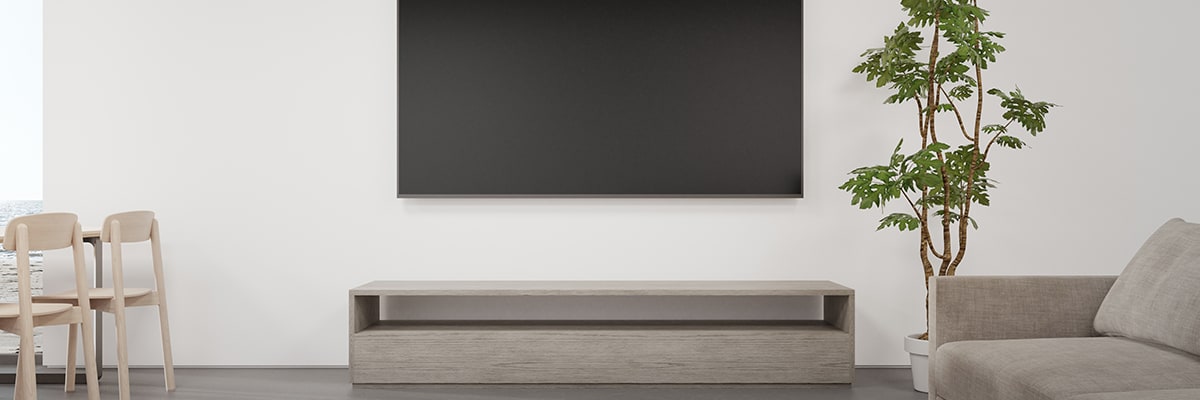
Return navigate_next
How to Choose the Best TV Screen Size for a Room
May 16, 2021 *
According to Best Buy, families typically only replace their TV sets about once each eight years. This makes selecting a new set tough. These days, TV tech and available features change so frequently that the perfect television set from the past decade probably doesn’t even exist on the market any longer.
At the same time, Best Buy says that the biggest mistake that people make in buying TVs usually has nothing to do with new technology or options. Instead, they buy a TV that’s too big or too small for the room. Of course, the display quality and budget will factor into making a good decision. With that in mind, take a moment to learn how an expert would right-size their next TV.

How to Right-Size a TV Screen for a Room
Nobody wants a TV that’s so small it’s hard to view subtitles or image details. On the other hand, TV shoppers often struggle to figure out when a TV set is too large vs when it’s too small. Most people would rather not sit in the first row of a movie theater, and a giant TV set in a small room can offer that same poor experience.
One general rule of thumb consists of multiplying the screen size by a factor of 1.5. This can help calculate the minimum distance to sit away from the screen to enjoy the best picture quality. For instance, the rule-of-thumb calculation would suggest that people should sit at least 90 inches, or 7.5 feet, away from a 60-inch screen.
On the other hand, the kind of display also matters. A 4K screen, for example, will still typically let people see clear images if they sit less than 7.5 feet away. Still, a very large screen in a small room might force people to turn their heads uncomfortable, so it’s still best to consider the distance people will sit from the set.

Is it Better to Spend Money on Screen Quality or Size?
Sometimes, budgets make people weigh the pros and cons of stepping down in picture quality vs. screen size. Good picture quality can usually make up for modest errors in judging screen size. On the other hand, size can almost never make up for poor quality. TV experts would generally sacrifice a few inches in screen size to preserve image quality.
Also, since people usually don’t replace their TV sets often, they should put some thought into making a future-proof purchase that they won’t regret when the next TV innovation is released.
For the best screen image quality, consider these suggestions:
- According to CNET, an OLED TV will generally provide the best image quality. OLED TV sets also tend to cost the most and aren’t available in all screen sizes yet.
- For considerably less than the best OLED TV sets, a good 4K UHD TV should please even the most selective TV viewers.
If this discussion about TV size and image quality hasn’t answered every question, check out this guide to buying the best TV.

How to Keep a New TV in Tip-Top Shape
As mentioned before, people don’t buy new TVs that often. They also represent a large investment and probably, a device that gets used just about every day. To make certain that the set keeps functioning as well in several years as it did the first day it got unboxed in the living room, look into purchasing an Upsie TV extended warranty.
An Upsie warranty ensures that nobody has to budget for unexpected problems. It also provides at-home visits by certified techs to make repairs easy and efficient. Upsie offers affordable, two-, three-, and five-year warranties and does not charge a deductible or extra fees. They also provide broad coverage for screen burn-in, connectivity issues, power problems, early wear, and more.
Take some time to figure out which TV screen size will satisfy everybody in the family. Then make the smart choice to buy an Upsie warranty online. Upsie even accepts new customers up to 11 months after buying a TV.
Learn More About TV Warranties:
* This article is over 6 months old and may or may not be updated.
